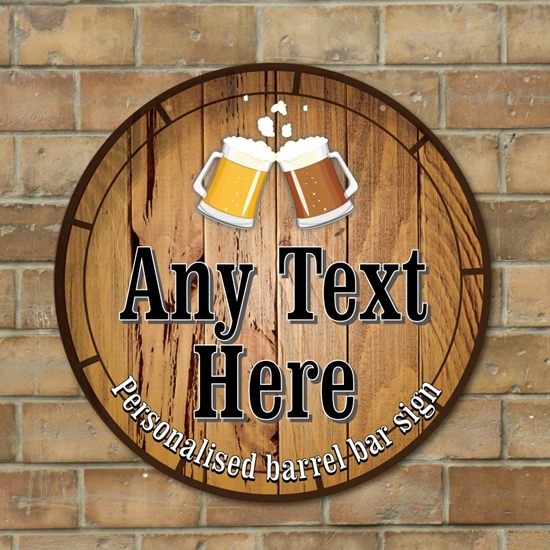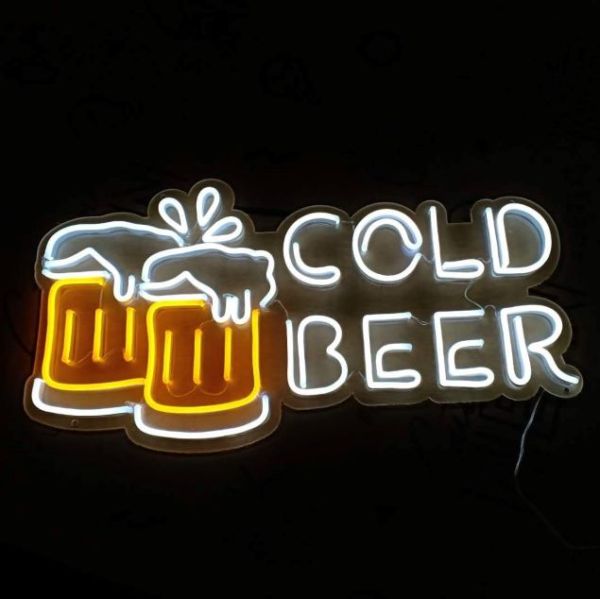Excellent Advice To Picking Bar Signs
Wiki Article
What Is The Difference Between Bar Signs In Size?
The size of bar signs varies in relation to their purpose the location, their purpose, and aesthetics. The following is a breakdown as to how the size of bar signs impacts their functionality and appeal. Large Signs
Attract attention and provide a focal focus.
Examples include: outdoor signage, branding and walls with a focal point.
Placement: Typically placed over entrances, on huge walls, or in front of the bar area to attract customers.
Examples include neon signs with large sizes with a vintage look, large-sized mural signs, and vintage-style signs that are large in size.
2. Medium Signs
The purpose is to add information, or enhance the design without taking up excessive space.
The uses include menu boards as well as directions and displays for promotions.
Placement: Positioned in a way that is easily visible but not too overwhelming. For instance behind the bar, above seating areas, or on walls that are feature.
Examples: Metal signs that feature the bar's logo, themed decorative signs, or medium-sized boards to advertise specials.
3. Small Signs
Use to create subtle details or specific particulars.
Uses: Table signs, or small decorative pieces.
Placement: Tables, shelves or displays that permit close-up views.
Examples: Small frames of quotes or drink cards.
Size Aspects
Visibility
Large Signs: They are designed to be seen far away, which makes them perfect for attracting pedestrians and establishing the bar's image.
Medium Signs: These signs are ideal for balancing visibility with space efficiency and providing important information, while not overpowering the decor.
Small Signs (small signs): These are ideal for intimate and close-up information that are displayed at eye level.
Proportion
Large signs should be proportionate with the available space. This can prevent them from overwhelming smaller spaces. Perfect for large or open areas.
Medium Signs: Ideal for indoor use, they can be placed anyplace.
Small signs: Ideal to add details and fit into smaller spaces, without clutter.
Impact
Signs in large sizes are a great way to create an impression that is striking and could make a significant branding component. They are used to set the mood in the bar.
Medium Signs Creates an equilibrium between visibility and decor, contributing to the overall ambiance while conveying important information.
Small signs (Signs): Adds detail and charm to an experience.
Practicality
Due to the size, large signs can be costly.
Medium Signs - Easy to set up and move with the flexibility to make design changes.
Small Signs: Very adaptable and easy to replace or update suitable for dynamic environments like bars with frequently changing menus or promotions.
Functionality
Large signs are mostly practical and appealing.
Medium Signs are functional as well as decorative. They provide essential information while also adding the aesthetics.
Small Signs: Primarily functional for detailed information, contributing to the overall design and design in a subtle manner.
The ideal size for an appropriate bar sign is dependent on its purpose, design of the space, and the impact desired on the patrons. When you balance these aspects, you can ensure that your signs add to the bar’s atmosphere and operating requirements. Check out the recommended hanging bar sign for more info including hanging pub signs for sale, garden bar signs, personalised pub signs for garden, outdoor home bar signs, design your own bar sign, pub signs for garden, personalised cocktail sign, personalised metal pub signs, staying inn sign, personalised bar signs and more.

What Is The Difference Between Bar Sign Customization And Personalization Differ?
Customization and personalization of bar signs is done to reflect the style, brand and ambience of an establishment. Here are a few examples of bar signs that are different in terms of personalization and customization. Materials
The materials that can be customized include wood and metals (acrylic) as well as neon, LEDs, chalkboards, vinyl and many more.
Personalization: Choose materials that go with the bar’s theme or desired aesthetic. Choose rustic wood for a warm bar, or a sleek acrylic to create a modern lounge.
2. Design
Custom Graphics Illustrations, typography, and artwork.
Personalization - Use distinct brand elements and imagery or theme-based designs to create a unique bar atmosphere.
3. Size and shape
Custom Sizes: From small outdoor marquees to large tabletop signs.
Personalization - Customize size and shape to meet specific areas and accommodate the requirements of branding, for example big letters or small signs.
4. Color
Custom Color Schemes: Pantone Matching, RGB Options and Customized Finishes.
Personalization: Select colors that resonate with the bar's brand identity design, interior decor, and target audience preferences whether bold and vibrant or elegant and subdued.
5. Lighting
Custom Lighting Effects: Neon, LED backlit, edge lit or projection.
Personalization: Select lighting to enhance visibility while also aligning the theme of the bar as well as your preferred atmosphere. Examples include neon for retro-inspired vibes or LED for modern touches.
6. Text Messaging
Custom Text: Bar name, slogans, quotes, menu items, event announcements.
Personalization: Design bespoke messages that reflect your bar's personality in a way that communicates deals, promotions, and brand values.
7. Interactivity
Custom Interactive Features - Digital Displays, Interactive Projections or QR Codes.
Personalization - Use interactive elements, such as digital games or menu boards to entice and motivate patrons.
8. Installation and mounting
Custom Mounting Solutions for Freestanding, wall-mounted, hanging or window-mounted.
Personalization: Choose mounting solutions that integrate seamlessly into the overall design concept.
9. Seasonal and Event Specialized
Custom Themes: Holiday decorations, seasonal motifs, or themed events.
Personalization: Update signs regularly to reflect seasonal changes, celebrate holidays, or promote special events, creating an engaging and dynamic environment for guests.
10. Brand Consistency
Colors, fonts, and logos are all customized branding elements.
Personalization - Make sure that there is consistency in all signage, branding and marketing materials to build brand recognition as well as build brand recognition. create an integrated visual experience for clients.
Benefits of Customization and Personalization
Brand Differentiation: Stand out and make a lasting impression.
Brand Identity - Reinforce the brand's image and values to foster customer loyalty.
Atmosphere Improvement: Personalize your the bar's signage to reflect your bar's ambience and atmosphere. This will enhance the overall experience for patrons.
Engagement: Personalized signage can create excitement and stimulate patron interaction.
Bar owners can use customization and personalization to create signs that are not only unique but also adds to their bar's appearance, atmosphere and image. Follow the most popular bar sign hanging for blog tips including home bar pub signs, novelty bar signs, home bar pub signs, gin bar sign, bar signs, hanging pub signs personalised, home pub signs, to the bar sign, hanging pub signs for garden, design a pub sign and more.

What Is The Difference Between Bar Signs In Terms Of Interactivity?
Bar signs may have different levels of interaction in order to attract customers and enhance the overall experience. Below are some examples of bar signs that differ in their interactivity. Static Signs
Traditional Design: Static signage conveys information without any interactivity.
Common Types: printed posters, painted murals or traditional neon signs.
2. Digital Displays
Digital signs offer instant updates and animations, along with multimedia content.
Interactivity: Touchscreen displays may provide interactive menus, games or other promotional content.
Benefits: Attract the attention of customers, give them information that is relevant and encourage patron engagement.
3. QR Codes
QR Codes on Signs: QR codes are a great way to provide a link to menus, promotions or social media profiles.
Benefits: Give quick access to information regarding promotions or loyalty programs.
4. LED Screens
Dynamic Messaging: LED screens are able to display scrolling text, animations or video content.
Touch-enabled LCD screens allow users to interact with content. For example, they can select menu items or play games.
Benefits: Create immersive experiences to draw attention, and efficiently convey information.
5. Projection Mapping
Immersive Experiences - Projection mapping transforms surfaces to dynamic displays that can provide interactive images and stories.
Interactivity: Guests are able to interact with projections, for example virtual games, interactive ones or even.
The benefits include the creation of an atmosphere that encourages interaction between people and increases the enjoyment of being in the room.
6. Augmented Reality
Enhance Reality: AR overlays digital content onto the physical world, providing interactive experiences.
AR-enabled Signs: AR signs allow customers to interact and view virtual elements like cocktail recipes, or play virtual games.
Benefits: Unique experiences will engage customers and help you differentiate your bar from other bars.
7. Motion Sensors
Motion sensors detect movements and trigger interactive responses in the signage.
Interactivity - Signs respond by changing their contents, displaying animations and displaying specific messages in response the patrons' movement.
Benefits: Enhance engagement, create immersive environments, and surprise and delight patrons.
8. Social Media Integration
Online Interaction: Signs could feature social media handles or hashtags to encourage people to interact online.
User-generated content: Ask customers to share photos of the signs on social media to increase the visibility and reach of your bar.
Benefits: Increase awareness of brands and encourage community involvement.
9. Interactive Lighting
Dynamic Effects: Interactive LED signs or neon signs can respond to sounds, touch or movements.
Signs that interact alter their color, brightness and patterns according to patron interactions or environmental clues.
Benefits: Create a sense of immersion, enhance ambiance, and draw interest.
10. Gamification
Interactive Games: Displays with interactive games and challenges that draw customers in and encourage them to participate.
Offer discounts and freebies in order to encourage players to complete challenges and even win games.
The benefits include: extending the duration of stay, encouraging social interaction, and encouraging frequent visits.
Through the incorporation of interactive elements into signage, bar owners can create interactive experiences that captivate patrons, promote brand awareness, and distinguish their establishments in a competitive market. View the most popular hanging pub signs for more tips including pub signs, pub sign design ideas, indoor bar signs, large bar signs, personalised cocktail sign, pub signs for garden bar, bar pub signs, personalised home bar signs, personalised home pub sign, garden bar signs and more.
